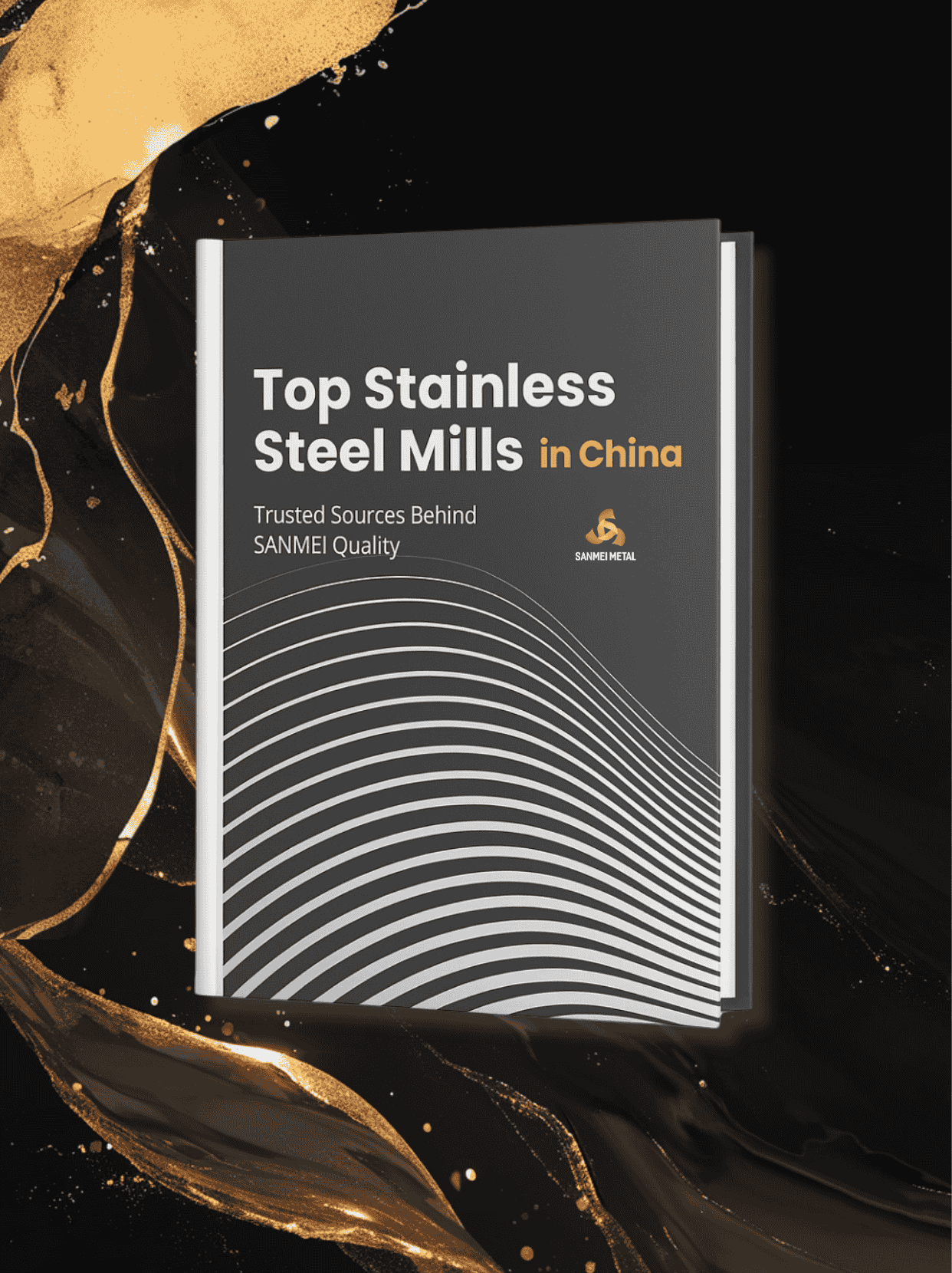
Өзіңізді алыңыз ТЕГІН Қолжетімділік: Қытайдың #1 болат фабрикасының деректері
Сатып алушыға бағытталған: Диірмендерді сорты/әрлеу/ені-қалыңдығы/қолданылуы бойынша сәйкестендіріңіз
BAOWUЦиншанЛискоТиско
Мәліметтер мен мысалдарды қарау →


Жалпы қасиеттер
420J2 құрамында көміртекті (C: 0,26-0,40%), хромды (Cr: 12,0-14,0%) және азырақ мөлшерде басқа элементтерді қамтитын химиялық құрамы бар. Ол магнитті және термиялық өңдеуден кейін HRc52-55 Rockwell қаттылығына дейін қатайтуға болады.
Қолданбалар
420J2 тот баспайтын болат қаттылығы мен беріктігіне байланысты сүңгуір пышақтары, қарапайым асхана пышақтары, хирургиялық аспаптар, қол құралдары, сорғы біліктері, қылыштар және қанжарлар сияқты қолданбаларда қолданылады.
Стандартты
420J2 тот баспайтын болаттан жасалған жолақтарға арналған JIS G4303, ыстықтай иленген баспайтын болаттан жасалған пластиналар, парақтар және жолақтар үшін JIS G4304 және тот баспайтын болаттан жасалған пластиналар, парақтар және жолақтар үшін JIS G4305 сияқты халықаралық стандарттарға сәйкес келеді.
Коррозияға төзімділік:
420J2 жұмсақ атмосферада және тұрмыстық ортада жақсы коррозияға төзімділігін көрсетеді. Сондай-ақ сұйылтылған азот қышқылына, көмір қышқылына, аммиакқа, шикі мұнайға, жуғыш зат ерітінділеріне, сірке суына, тағамдық қышқылдарға, бірнеше мұнай өнімдеріне және буға төзімді.
Ыстыққа төзімділік:
420J2 бөлме температурасында коррозияға жақсы қарсылыққа ие болғанымен, оның жоғары температуралы ортадағы өнімділігі нөлден төмен температурада икемділіктің жоғалуына және шамадан тыс шыңдауға байланысты жоғары температурада беріктіктің жоғалуына байланысты шектеледі.
Өңдеу қабілеті:
420J2 жасытылған күйде өңдеуге салыстырмалы түрде оңай, бірақ қатайтылғаннан кейін оның өңдеу қабілеті төмендейді.
Дәнекерлеу:
Дәнекерлеу 420J2 үшін мүмкін, бірақ сынғыштық пен суық крекингті болдырмау үшін күйдірілген, қатайтылған немесе шыңдалған жағдайларда дәнекерлеуді болдырмау ұсынылады. Дәнекерлеу кезінде алдын ала қыздыру және өтпе аралық температураны бақылау, содан кейін өте баяу салқындату және дәнекерлеуден кейінгі жасыту крекингтің алдын алудың жақсы шаралары болып табылады.
Ыстық жұмыс:
Ыстық өңдеу 420J2 тот баспайтын болаттың беріктігі мен тозуға төзімділігін жақсартады.
Суық жұмыс:
Суық өңдеу 420J2 қаттылығы мен беріктігін арттырады, сонымен қатар оның бетінің сапасы мен өлшемдік дәлдігін жақсартады.
Күйдіру:
Күйдіру 840-900°C (1544-1652°F) дейін біркелкі қыздыру және температура барлық қимада біркелкі болғанша ұстау арқылы орындалады. Суландыру және салқындату қажет.
Шынықтыру:
Шынықтыру сынғыштықты және қатаюдан кейінгі ішкі кернеулерді азайту үшін қолданылады.
Қатайту:
420J2 950-1020°C (1742-1868°F) дейін қыздырып, температура бүкіл секцияда біркелкі болғанша ұстау арқылы, содан кейін маймен немесе ауамен салқындату арқылы шынықтыруға болады.
Меншік | Мән |
Тығыздығы | 7,75 г/см³ |
Серпімділік модулі | 29 x 10^6 psi |
Жылулық кеңею коэффициенті (32-212°F) | 10,4 x 10^-6 дюйм/дюйм°F |
Жылу өткізгіштік | 24,9 Вт/м·К |
Меншікті жылу | 0,11 Бту/лб·°F |
Электр кедергісі | 56 мкм·м |
Меншік | Мән |
Шығымдылық күші, мин. | 540 Н/мм² |
Созылу күші, мин. | 740 Н/мм² |
Ұзарту, мин. (%) | 12 |
Қаттылық, макс. (HRC) | 55 |
Элемент | C | Си | Mn | П | С | Cr | Ni |
% | 0.26-0.40 | ≤1,00 | ≤1,00 | ≤0,040 | ≤0,030 | 12.00-14.00 | ≤0,60 |

| Түр | Ені (мм) | Салмағы (MT) | Қалыңдығы (мм) | ||||
| 420J2 катушка | 1000, 1219, 1240, 1500 немесе теңшелген | 3-10 | 0.15-3.0 | ||||

| Түр | Ені (мм) | Ұзындығы (мм) | Қалыңдығы (мм) | |||||||||
| 420J2 парақтар | 1000, 1219, 1240, 1500 немесе теңшелген | 2000, 2438, 2500, 3000, 3048 | 0.3-3.0 | |||||||||
Біз клиенттеріміздің қанағаттануын қамтамасыз ету үшін өз клиенттерімізге ең жақсы және жоғары сапалы қызмет көрсетуге дайынбыз.









Беделді мекемелермен сертификатталған және барлық аспектіде халықаралық стандарттарды ұстануға міндеттенеді.




Тұтынушының кері байланысы компания сапасының ең шынайы көрінісі болып табылады.
Тот баспайтын болаттан жасалған катушкалар мен тот баспайтын болаттан жасалған парақтарға қатысты Sanmei Metal компаниясының қосымша техникалық анықтамаларын қараңыз.
Штаб-пәтері:
Жасау орталығы, №142, Юхэ жолы, Леконг қаласы, Шунде ауданы, Фошан қаласы, Гуандун провинциясы, Қытай. 528315
Зауыт: Лиюань логистикалық қаласы, Ченчунь қаласы, Шунде ауданы, Фошан қаласы, Гуандун провинциясы, Қытай. 528313
Австралияның жергілікті қолдау базасы: (Ятала, QLD) – 2026 жылы келеді